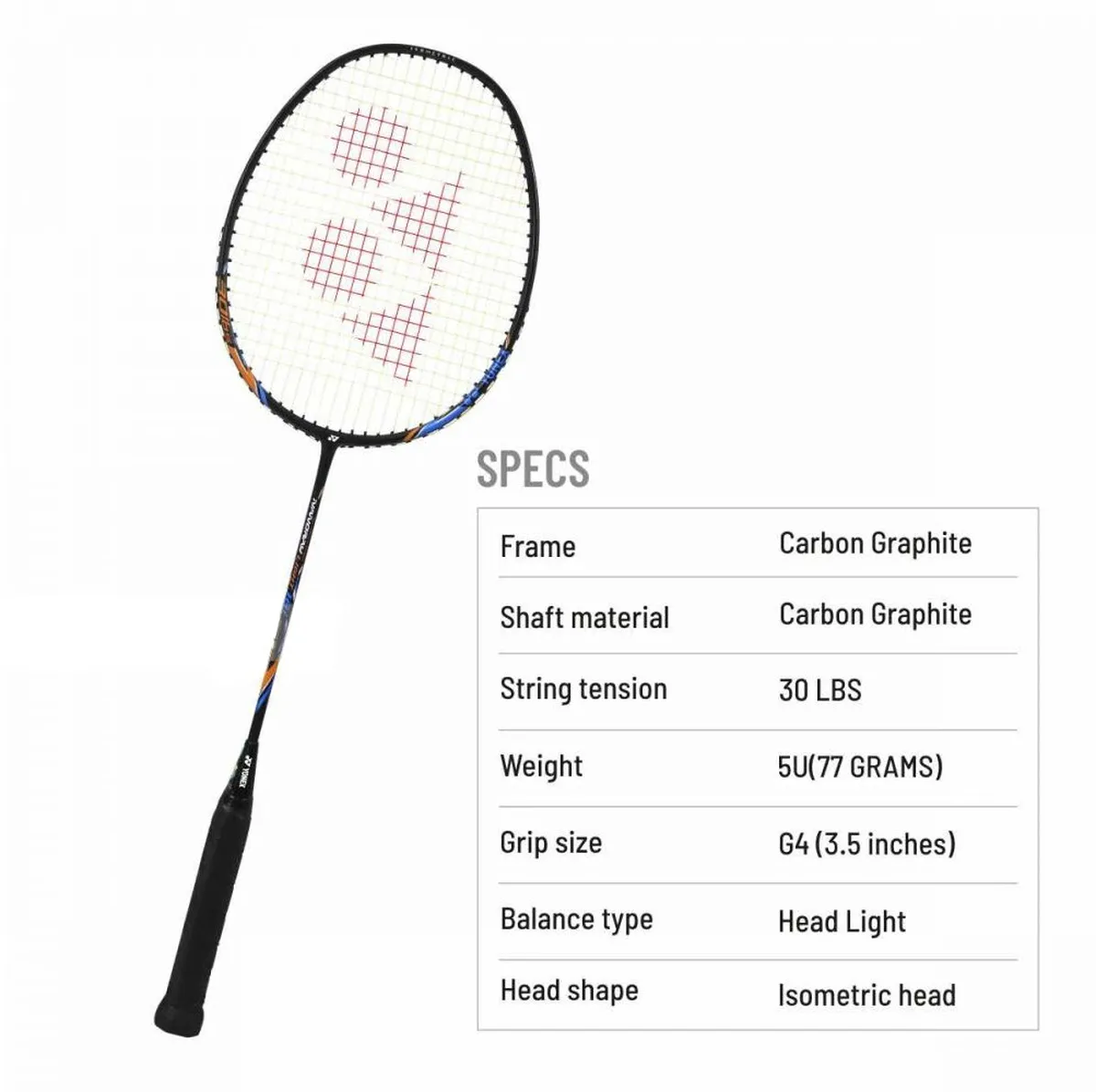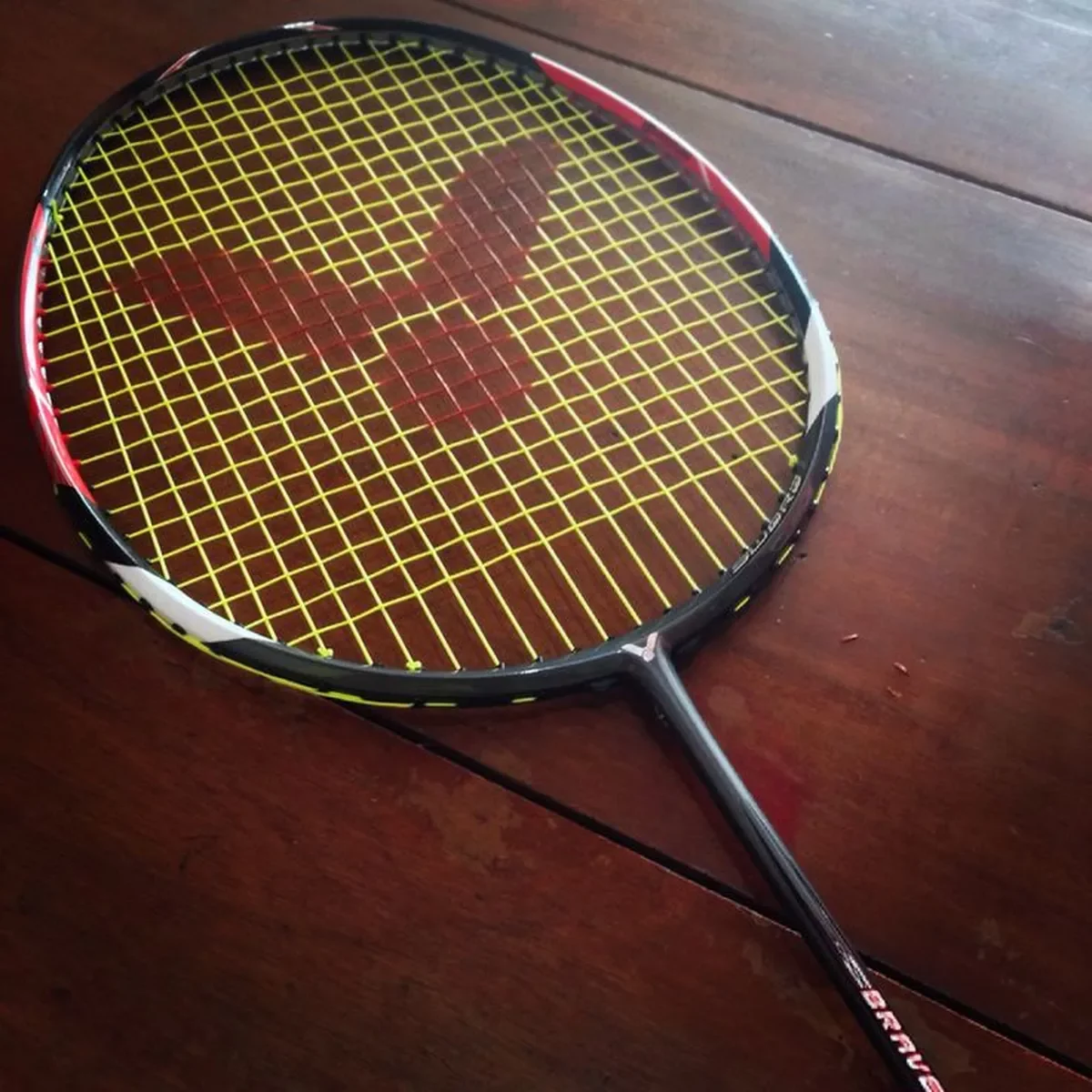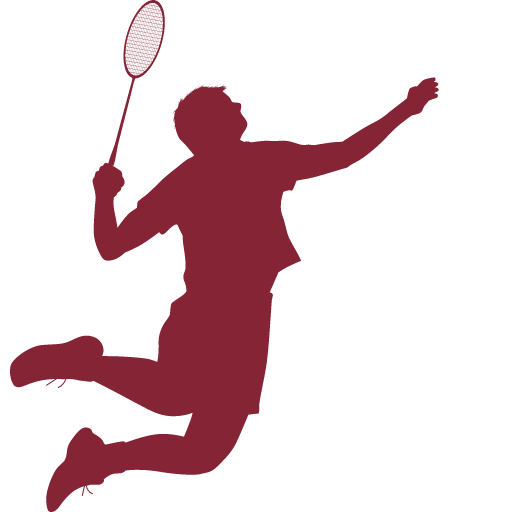So, you’re looking for best badminton racket for an intermediate player…it’s an important buying decision. If you get the wrong racket, it can greatly hinder your development as a player and may cause you injuries. Here are a few recommendations of what racket you should get as an intermediate player.
1. Senston N80

If you’re looking to buy your first branded racket, and stop using the racket that come in a kit, this is perfect. If you are, what I call, advanced beginner or a beginner intermediate player – this is the racket you should get. Why?
We’ll it’s a durable racket. I’ve had mine for 3 years. I don’t play with it every day, but I’m surprised how long it’s lasted.
It’s also a great all-round racket. Very good control and has a decent smash. It’s light, but sturdy. And finally, it’s a great bargain – definitely the best value for your money. Get a couple of them (you’ll need a spare racket anyway), you won’t regret it.
2. YONEX Nanoray Light 18i

This is my go-to racket for doubles badminton. It’s less durable than the Senston N80 and a tad more expensive. It’s great for a forecourt player. Lighter than the Senston N80, and unlike the Senston N80 – which is even balanced, the YONEX Nanoray Light 18i is head light balanced. If you are looking to improve your forecourt game (or already have a lot of power in your shots), this is the perfect racket for you.
3. Victor Brave Sword 12

This is a beast of a racket. Evenly balanced, middle stiffness. So it’s perfect for an intermediate player – it’ll greatly improve your all round game. Get the 3U (heavier) version, it’s sturdier, slower (but this is such a fast racket – you’ll not notice it), has more power.
If you have a problem with clears – backhand, forehand, this is the racket for you. It’s great for attacking and defensive play. Every intermediate badminton player should get his hands on this racket and get a feel for it. You’ll be surprised how many of you are going to like it and buy it.
One of my club mates lent me his for a game and I struggled. I felt it is a racket that you need to ease into. Play with it for about a month before you start seeing its true potential. It’s has so much power, like a dragon, but one that you need to tame before you can safely ride it. I found that I needed to change my technique (more whip action and timing) in order to get the most out of this racket. I’d recommend it for both singles and double players (though my go to racket for badminton singles is the Yonex ARCSABER 6FL).
If you are more advanced intermediate badminton player, get the Victor Brave Sword 12.
Are you an Intermediate Player?
As an intermediate player, you should err on the side of caution when choosing a racket. I find that a lot of intermediate players get pro rackets, string them too heavily and their bodies and game suffer.
But let’s first deal with the elephant in the room. Who is an intermediate badminton player? In other words, how do you know if you’re an intermediate badminton player?
This is a difficult questions – in most clubs there are not set standards to determine player level. Here are a few general pointers that can help you answer this question.
Generally, badminton players can be assessed on two fronts: physical and mental. To be a good badminton you need to be in relatively good physical shape and have the right technique. Strategies, tactics, and adaptability are also important in badminton – and they become more important as your game develops.
For a player to be considered intermediate, they need to have a good understanding of and the capability to bring to court a range of badminton shots. And they have to be able to form winning strategies – that mostly take advantage of your opponents’ weaknesses. You not only have to know where to place the next shot, but also plan for the next couple of shots.
Now, I consider myself to be an intermediate badminton player. But this has not always been the case. When I was in my early 20’s, I was quite good. Played a lot – about 2 hours, 5 days a week. Won a few regional tournaments as a doubles player…if you’d asked me then I’d said I was an advanced player. No hesitation.
Then, I had a chance to train with the Mexican U-18 (I believe, my Spanish has never been that great) Olympics team. I walked onto the court and was giving these guys a run around. Dropshots, flicks, smashes, net shots, drives…you name it. Then their sensei came onto the court. He did something amazing.
All he did was clear the shuttle to the backcourt. I threw everything I had at this guy. And I knew where his return was going, but I still couldn’t beat. I was schooled by a 70+ year old guy!
What he did was notice and exploit my weakness – my poor backcourt game. I also realized that he was not playing me, but coaching me. He laid my path to being a better badminton player on the court. I was humiliated and at the end of the training session, asked him if I could play with his team. But I’m not Mexican, and I could train with them, but he was kind enough to let me play a couple of games a week.
Anyway, the moral of the story is – you don’t know what you don’t know: unknown unknowns. And if you can find someone who has represented their country at an international level, do everything you can to get them to give you a few lessons/coach you. It’s the best thing that you can do as an intermediate player. And until you get your racquets and shuttles for free – you are not an advanced badminton player.
Hopefully, that personal story has helped you to critically think about the level of your game and what you can do to improve it.
Before we get back to choosing the best badminton racquet for an intermediate player, there’s one more thing I’d like to add. No racket is going to magically make you a better badminton player. And of the 3 things that you need to buy: shoes, racket and shuttlecocks, don’t spend a lot of money on buying a racket…they don’t last. Spend as much as you can afford on getting high quality shoes.
3 things to consider when choosing a badminton racket
As an intermediate player there are 3 things you need to consider when choosing a badminton racket.
Singles or Doubles
Which version of the game do you enjoy more – singles or doubles? Pretty easy decision to make. If you enjoy playing both versions of the game. I recommend that you get a different racket for your singles and doubles play.
Development
As an intermediate player, you are looking to develop your technique. I recommend that you get a racket that is going to help you develop aspects of your game that you’re poor at. This is a mistake that I see a lot of intermediate players making, especially in singles.
If they are good at smashing (power players), they’ll get a racket that enables them to smash better. And they end up having a one-sided game. If you’re good at smashing, you should get a racket that improves your net play and drives (a faster, even balanced racket with more control). And if you are good at forecourt play, and fast drives, you should get a racket that gives more power to your smashes and lifts.
Cost
As an intermediate player, you’re going to go through a lot of rackets. Personally, I go through 2 rackets a year. That can add up. So, you don’t want to get a very expensive racket for your everyday play. Believe me, it’s not worth it. Your money is better spent on buying high quality shuttles, and whenever possible, hiring a coach.
So, don’t buy a $200 racket if you can’t afford to replace it. That’s why I recommend that you budget for at least 2 rackets. Remember playing badminton is not cheap!
That’s it for this post. Are you an intermediate player, what racket are you using? Let me know in the comment section below.

Leave a Reply